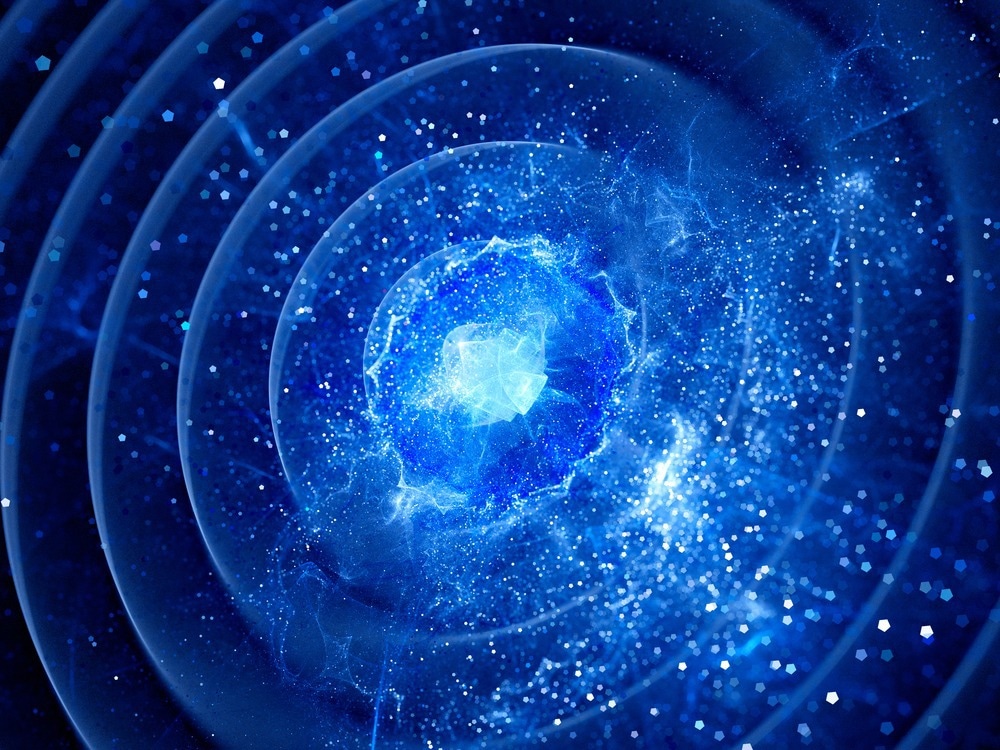In an article published in the journal Cryogenics, researchers presented the results of simulations and experimental tests of the shadow sensors embedded in the Birmingham Optical Sensors and Electromagnetic Motors (BOSEMs) to establish whether BOSEMs are suitable candidates for cryogenic applications.

Study: Cryogenic optical shadow sensors for gravitational wave detectors. Image Credit: sakkmesterke/Shutterstock.com
Terrestrial Gravitational Wave Detectors
Terrestrial gravitational wave detectors have been used to identify various gravitational wave sources. For example, researchers have detected potential black hole neutron star mergers, binary neutron star inspirals, and binary black hole mergers via the advanced Laser Interferometer Gravitational-wave Observatory (LIGO).
The aLIGO detectors' most sensitive band is limited by thermal noise from the primary optics and quantum shot noise. The thermal noise is combated in the KAGRA detector via cooling its core optics.
Advanced detectors such as Cosmic Explorer, the Einstein Telescope, and LIGO Voyager intend to reduce thermal noises by operating at cryogenic temperatures. For example, the core optics of LIGO Voyager is expected to have a silicon substrate since its thermal expansion coefficient is negligible and it displays excellent mechanical properties at cryogenic temperature.
Isolation Principle Followed by KAGRA, Virgo, and, LIGO
Future observatories will need a seismic isolation system equivalent to or even more advanced than the gravitational wave detectors used today.
In KAGRA, Virgo, and LIGO, the isolation mechanisms were designed differently but followed the same principle, i.e., to passively filter ground vibrations above the suspension resonances, the test masses are suspended using a multi-stage pendulum suspension in all of the detectors.
Birmingham Optical Sensors and Electromagnetic Motors (BOSEMs)
Optical sensors and electromagnetic motors (OSEMs) actively dampen each stage's resonances. The same systems use an internal optical shadow sensor system to track the location of the suspension chain.
At the LIGO observatories, the Birmingham design of optical sensors and electromagnetic motors (BOSEMs) and another version known as Advanced LIGO OSEMs have shown their compatibility, broad linear range, and dependability with very high vacuum.
BOSEMs, to function at cryogenic temperatures, can make an excellent supplementary sensor for next-generation observatories.
How Research was Conducted
The researchers studied BOSEM's cooling down and functioning, concentrating on the sensing technique to determine if the sensor is accurate at cryogenic temperatures. In addition, the researchers discussed possible issues with cooling the device and used finite element analysis to predict the cooldown and strains on the readout components.
Testing at cryogenic temperatures was carried out to compare the modeling results with the experimental findings and establish if any further design considerations were necessary.
To comprehend the differences between operation at normal and cryogenic temperatures, measurements of the device's noise were taken, and its features were examined.
Experimentation
The researchers first simulated the experimental setup's cooldown procedure. An LED and a photodetector (PD) worked together to detect shadows. For stability and electrical isolation, the LED and PD were integrated into distinct assemblies of cylindrical components.
The researchers used the Autodesk Inventor Nastran add-on to assess the cooling process. The simulation's accuracy was subpar since the program did not account for these parameters' temperature dependence. The investigation aimed to discover where the high stresses would arise and whether the stresses were substantially above their yield limits.
Significant Findings of the Study
The study concluded that Birmingham optical sensors and electromagnetic motors are excellent sensors for optical sensing in gravitational wave detection at cryogenic temperatures.
The researchers simulated Birmingham optical S\sensors and electromagnetic motors at temperatures less than 123K. They discovered that due to the increased LED quantum efficiency at cryogenic temperatures, the current satellite amplifiers saturate below 205K. To prevent saturation at cryogenic temperatures, the trans-impedance was reduced to 61.9 kΩ from 121 kΩ.
Enhancing the satellite amplifier's power also increases the shadow sensors' shot noise-limited sensitivity. Compared to the room temperature sensitivity of 6 × 10-11 m/√Hz in the same optical setup, the researchers obtained the shot noise level of 4.5 × 10-11 m/√Hz with a completely open photodetector. This enhancement resulted from improved LED quantum efficiency of 0.156 at 117K from 0.058 at ambient temperature. The feedback loop for temperature stabilization and LED current driving, which produced peaks in the spectrum, confined the spectrum below 5Hz.
Future Outlooks
The study discovered that below 200 K, as opposed to the 300 K case, the first derivative of the PD current over temperature is substantially bigger. Therefore, for the best detection noise of the shadow sensors, temperature changes of Birmingham optical sensors and electromagnetic motors should be minimized in future gravitational wave detectors. Moreover, the heating from BOSEM LEDs should also be considered while designing the cryogenic system for future gravitational wave detectors.
Reference
Amit Singh Ubhi, John Bryant, David Hoyland, Denis Martynov (2022) Cryogenic optical shadow sensors for gravitational wave detectors. Cryogenics. https://www.sciencedirect.com/science/article/pii/S0011227522001291
Disclaimer: The views expressed here are those of the author expressed in their private capacity and do not necessarily represent the views of AZoM.com Limited T/A AZoNetwork the owner and operator of this website. This disclaimer forms part of the Terms and conditions of use of this website.